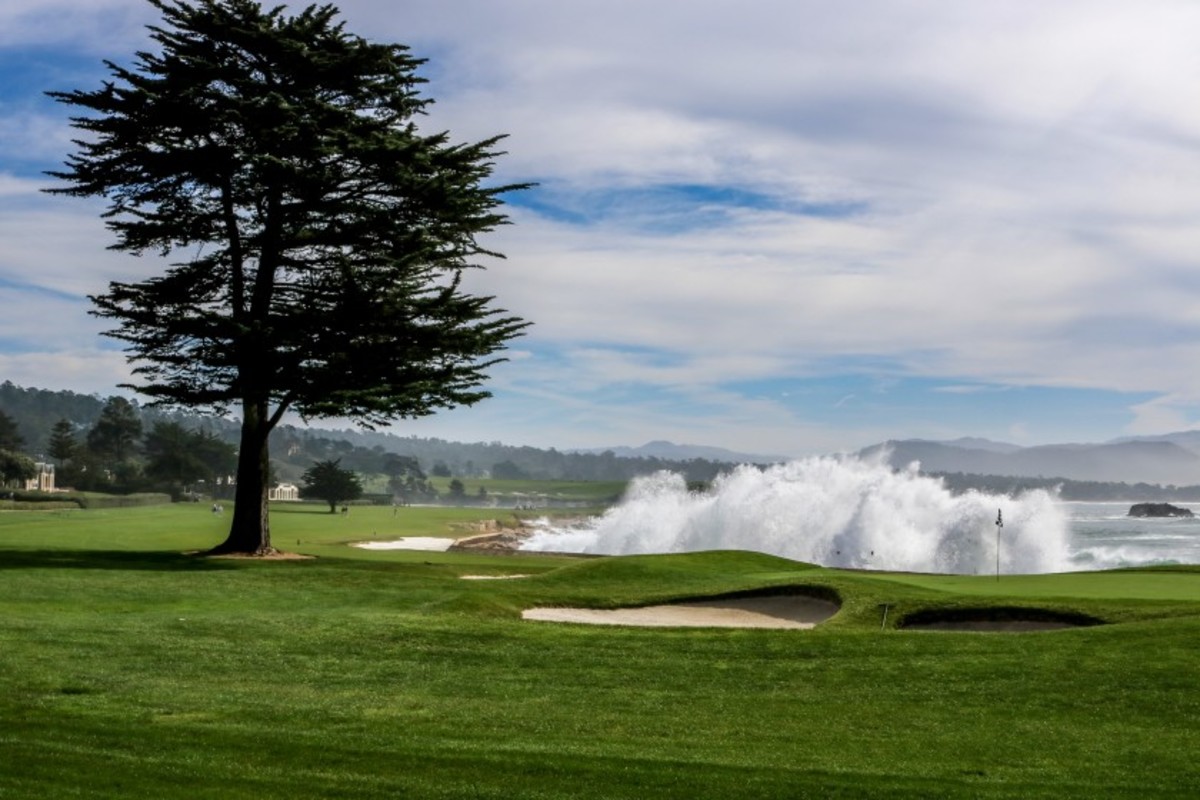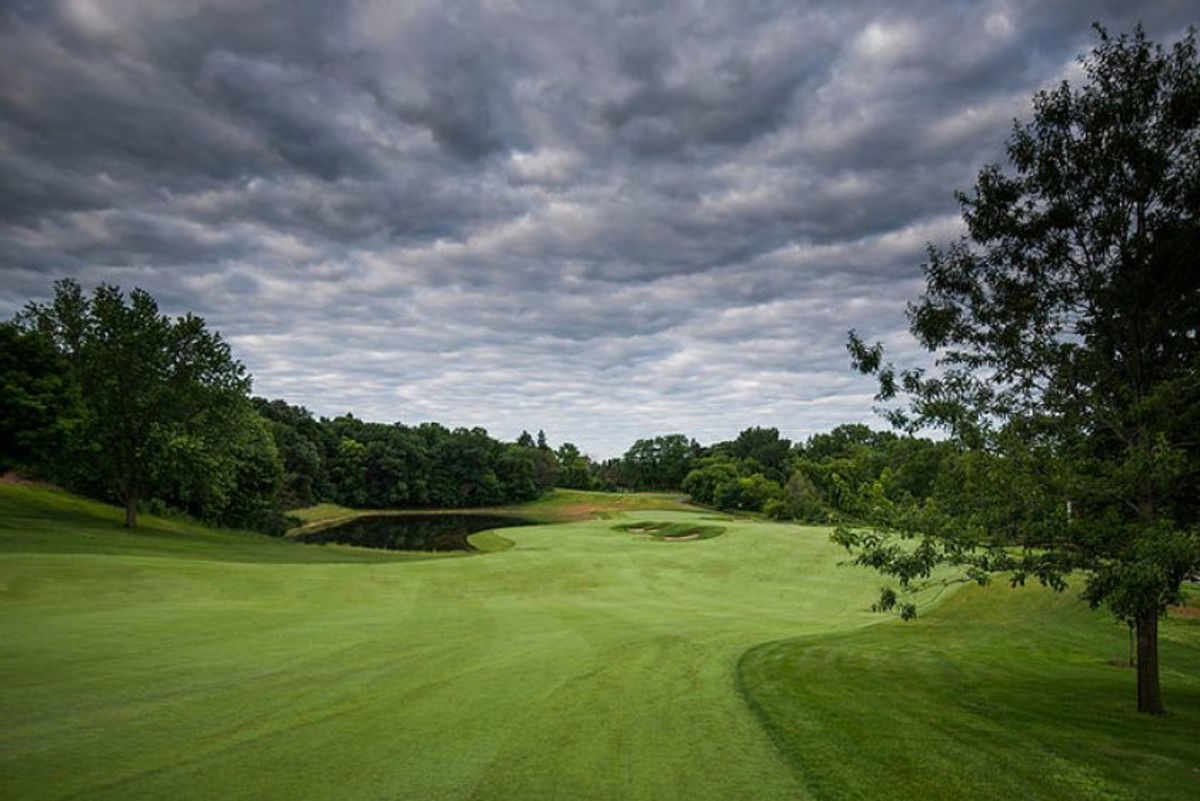What makes a signature hole?

Ah, the art of marketing, an illusory world where perception sometimes blurs the lines of reality.
Never has that notion applied more than to the signature golf hole, an oxymoronic confluence where “tough” and “aesthetically pleasing” meet. The two, in most cases, are not mutually exclusive. Signature holes tend to capture awe-striking visuals melded with memorability.
Make no bones, some can be challenging. No doubt they intensify the fun factor, but many certainly could be categorized as eye candy. The savory steaks of any course are the challenging holes, often unsung. Those require heightened strategy, tactical prowess and the desire to peel away cobwebbed clubs. Signature holes are like chewing juice — a healthy dose of fructose but lacking something more palpable.
RELATED:See signature holes from around the country in Morning Read's original video series
As it turns out, it is not uncommon that architects fall at the mercy of marketing dollars when it comes to course portrayal. It’s threefold. Course operators are in the business of making money; signature holes serve as a selling point; and they’re an effective arm in conjuring up an emotional connection. Stimulate the senses. Come play. Marquee destination.
“I hate the concept of a signature hole,” said Richard Mandell, a Pinehurst, N.C.-based course designer whose work can be found in 13 states and includes more than 60 projects. “It absolutely bastardizes the golf course. A marketing company selling the idea — it dumbs down the idea, in my mind. If you sold one hole of mine as a signature hole, it’s insulting because I have 18 signature holes out there — give and take a few, maybe.”

Said longtime architect Paul Albanese, also the director of golf course architecture at Scotland’s Edinburgh College of Art, “It’s a little like a football team where the quarterback gets all the credit, yet the linemen really keep the quarterback protected and help the team win.”
No argument there.
Check out almost any magazine cover featuring a signature hole and it’s likely artistic value won out over its overlooked sister, better known as degree of difficulty.
Case in point: practically every year leading up to the Players Championship at the Players Stadium Course at TPC Sawgrass, previews plaster the majestic-looking par-3 17th hole to pique interest, naturally. And, in fairness, the 4,100-square-foot island green designed by Pete and Alice Dye may arguably be one of the least strategic holes on the entire layout. But the subliminal branding suggests that Joe Golfer should want to play the hole because of the aesthetics alone. Come hither.
To this day, Mandell chuckles at what transpired at the famed Keller Golf Course in Maplewood, Minn., which hosted the 1932, 1954 PGA Championships and the Patty Berg Classic in the 1970s. Mandell renovated the parkland course while it had been closed for two years before reopening in 2014. In marketing campaigns, the par-3, 150-yard fourth hole was the one promoted, he said. The same hole that has a mammoth oak tree 50 yards in front of the center of the green.

“We had wrapped up design and got it back open, and every picture they’d show is that darn tree on the hole,” Mandell said. “How about featuring the 12th hole, where I have a double fairway and a central bunker?”
The term signature hole can be traced to venerate designer Robert Trent Jones, according to Mandell. Known for his inimitable work on national championship courses, Jones designed or remodeled more than 350 designs over seven decades. Famed golf scribe Herbert Warren Wind likened Jones to an artist in a 1951 New Yorker article. One of Jones’ earliest advertising campaigns centered around the premise of giving “your course a signature.” From that, the description evolved.
In the April 2009 edition of the Golf Course Architecture, son Rees Jones confirmed, “Dad was probably preeminent at selling and promoting himself.”
Peerless in his own right, Donald Ross would set out to make every one of his designs as perfect as possible. The routing dictated course layout. Calling a hole or two signatures on any of his courses might be deceptive. Or even disingenuous. It’s analogous to a talented musician creating the best possible album in lieu of crafting a commercial hit.
“I’ve made it very clear that one of the great things about Ross’ designs is that every hole is a signature hole,” said Michael Fay, co-founder and captain emeritus of the Donald Ross Society. “A golf course is a golf course. It’s got to be 18 holes, and it has to have the same theme when you start on the first tee and walk off the 18th tee.”
Thematically speaking, Mandell implied there are designers who try to go for broke and develop one or two standout holes, thereby inviting issues.

“If it happens naturally, frankly, and you have one signature hole and the rest of the holes don’t matter, then you’re really not that good of a golf course designer,” he said. “But if you force the situation, you are manipulating — probably in a bad way — the holes before and after it. Because if you’re putting a hole on a piece of property that has to be a certain way, then you are at that point where you have to make decisions on holes before and after to accommodate that ‘signature’ hole.”
Not all signature holes should wear a badge of dishonor, of course. Some aren’t manifestations of an architect or marketer.
During the 1982 U.S. Open at Pebble Beach Golf Links, Tom Watson’s clutch chip on No. 17 probably did more for a hole’s profile than most. Think about it. Who hasn’t tried emulating a chip from the same patch of gnarly rough or feels more adrenaline stepping onto the par-3 tee box?
In its own right, No. 17 greets players with an often-treacherous crosswind that ultimately leads into second-guessing club selection — usually by the time the ball reaches mid-flight. That said, the penultimate hole serves as the unofficial signature hole. The oft celebrated signature belongs to the picturesque dogleg left par-5 18th, set along the rugged coastline.
A tough 550-yard finish, No. 18 likely wouldn’t count as Pebble Beach’s best, though. An argument could be made that the par-3, 106-yard seventh might be the layout’s standout. With a 40-foot drop from tee to green, which is surrounded by Carmel Bay on three sides, an unpredictable wind leaves golfers evaluating every strategical angle.
It’s these kinds of holes that Albanese has a soft spot. He has worked on design projects across the globe and developed top-notch designs, two masterstroke courses in Michigan’s Sage Run and Sweetgrass. He has seen firsthand where holes he would label as a gem go largely underappreciated.
“We spend as much time on all the holes as we do on those that get the flashy publicity,” he said. “I feel a little bad for them and don’t like focusing on the flashiest holes, because I do know in the design of all the holes we do, all holes have great thought put into them.”
As it stands, if signature holes can lure in the customers, the term won’t fizzle out. It’s a slippery slope that architects climb. And, rightly or wrongly, designers feel like it’s having an art showing in which the veil only partly uncovers the full painting.
The visionary in Mandell won’t pull any punches. Yet his sensibilities also convey pragmatism.
“When a designer decides, ‘Ah, this is my signature hole,’ I like that because I like to hear my competition being weak. ‘That’s your thought process?’ I say to myself,” Mandell said. “But then they have the last laugh because big marketing companies and whatever people hire them, because their picture is on the cover of Golf Digest.
“Maybe I need to play that game.”
Sign up to receive the Morning Read newsletter, along with Where To Golf Next and The Equipment Insider.
